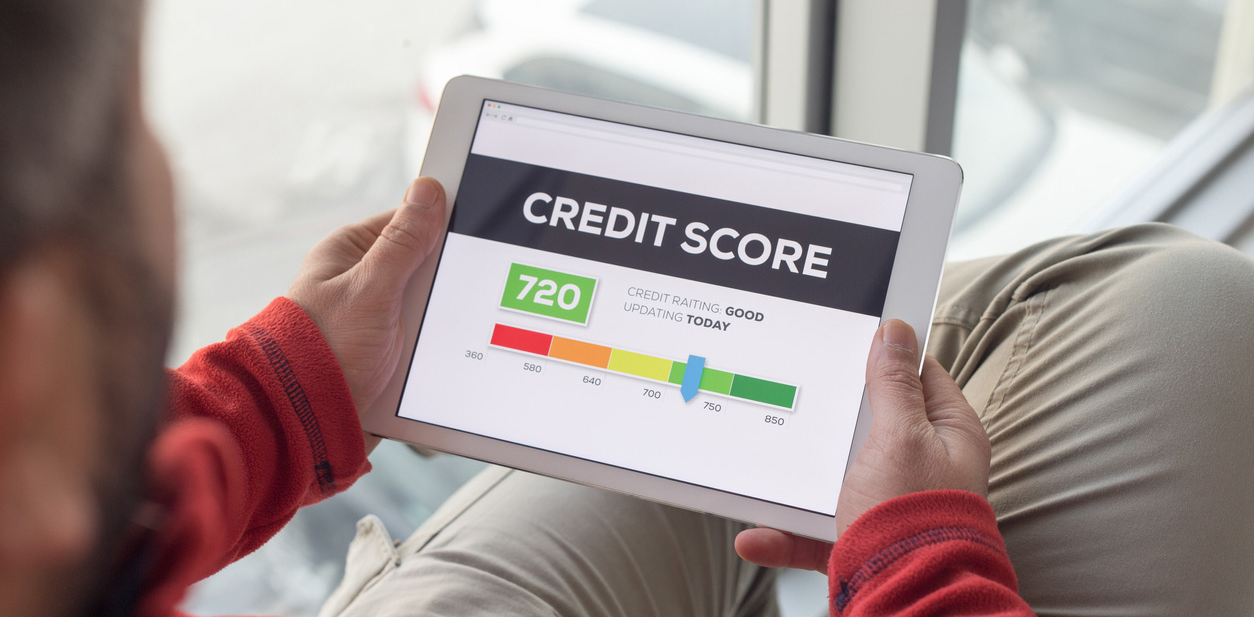Kicking the trade is a shady sales tactic used to pass the buck when it comes to trading in your car.
It’s time for you to buy a new car. Maybe you want better gas mileage, a better safety rating, or simply want to help protect the environment by upgrading to a sleek and sexy electric car.
Whatever your reasons, you likely plan on trading in your current vehicle to save a few bucks on your new purchase.
But what happens if you still owe on your current car? Worse, what if you owe more than it’s worth?
The answer is simple, at least to some car dealerships: just kick the trade. But should you?
Trade-In Value vs. What You Actually Owe on Your Car Loan
Trade-ins are a common tactic to save money during the car-buying process. In 2019 alone, 45% of car purchases involved a trade-in.
But your car’s trade-in value isn’t entirely equivalent to its actual cash value (ACV). Dealers use a variety of sources — such as guides from NADA, Kelley Blue Book, Edmunds, and other pricing indexes — to approximate its trade-in value.
In turn, the trade-in value is used to approximate your car’s retail value, or how much the dealer can expect it to sell for.
Retail value: the value of the car for sale by a dealer or private seller. This includes profit margin.
Trade-in value: the value of a vehicle to a dealer who will then sell it for profit. This is considerably lower than retail value.
What if I still owe on my trade-in?
Sometimes, and for whatever reason, you may need to buy a new(-to-you) car before you’ve paid off your existing loan. In some cases, this can be advantageous.
Because a car’s value depreciates over time, you may have paid more on your loan than the car’s current ACV. Awesome — this means you have positive equity that can be credited toward your new purchase.
However, if your loan balance exceeds your car’s ACV, you have negative equity, resulting in an underwater or upside-down loan. Negative equity can be calculated by determining your loan-to-value ratio, or LTV. A higher LTV corresponds to more negative equity.
Car (LTV) Loan-to-Value Calculator
A loan-to-value ratio over 100% means you owe more on your loan than your vehicle is worth. An LTV over 125% can make it harder, but not impossible, to qualify for a refinance loan.
If your LTV is less than 100%, your car's value is higher than what you owe on your loan. The lower your LTV, the better.
When you trade in a car with an upside-down loan, the dealer pays off the loan for you, then rolls in the difference between the payoff amount and ACV into your new loan if you can’t cover the difference yourself.
This usually results in a new and heftier upside-down loan. To avoid it, some car salespeople recommend you simply “kick the trade.”
What Is Kicking the Trade?
Kicking the trade, as defined by the Wall Street Journal, is the suggestion for car buyers to return their cars to their lenders or creditors when financing a new car purchase.
On the surface, this makes sense. Quit paying your current loan and allow your lender to repossess it. From there, your lender will recoup its losses by selling the vehicle, and you’ll have a new car and new loan.
Except it’s not that simple.
How Kicking the Trade Works
Kicking the trade starts when you stop making payments on your old car in favor of a new car. Since you’re not trading in your old car and rolling the upside-down loan into your new loan, you’re “kicking the trade” back to your lender.
Naturally, lenders expect you to fulfill the responsibility to pay your car loan in full. Even if you stop making payments or surrender your vehicle to the lender (either voluntarily or via repossession), you’re still on the hook for the remaining loan balance.
After your creditor seizes your car, it’ll be listed for sale in an attempt to recoup some of the lender’s loss. That’s not the end of the road, however. You’re still liable for paying the deficiency.
The deficiency the amount leftover after your trade-in is sold by your lender. It includes the remaining loan balance plus any fees and penalties associated with your loan and contract, such as repossession or early termination fees, minus however much the lender sold your vehicle for.
How to Calculate Auto Loan Deficiency
Remaining Loan Balance After Trading In Vehicle
+ Fees and Penalties
– Vehicle’s Sale Price
= Deficiency
The car dealership isn’t responsible for paying a single cent if you opt to kick the trade; they’re just helping you wash your hands of a car you couldn’t trade in.
What they may not tell you, however, is that no amount of hand-washing can cleanse you of the ramifications of kicking the trade.
The Consequences of Kicking the Trade
During the repossession process, your previous lender will attempt to recoup its losses by selling your old car for as close to its ACV as possible. But what if you still owe more than what the car is sold for?
You guessed it — you still owe the deficiency.
Just because you no longer have the vehicle doesn’t mean you’re scot-free from paying your loan obligation. When you originally took out your loan, you agreed to pay it off in full and that’s exactly what the lender expects from you.
By kicking the trade, you may end up responsible for paying two loans. Subsequently, you might not save any money at all.
Just because you no longer have the vehicle doesn’t mean you’re scot-free from paying your loan obligation.
Worse, kicking the trade delivers a significant hit to your credit. Late or missing payments, repossession itself, possible collections for your outstanding loan balance, and subsequent judgments against you may each count as individual entries on your credit report.
A combination of so many individual negative entries could effectively annihilate your creditworthiness for seven years. Thus, from a single act of kicking the trade, you could have a hard time qualifying for a mortgage, taking out a credit card, or financing a new car.
Breaking down the costs
Consider a situation in which you’re buying a car for $18,000. The ACV of your current car is $4,000 with a remaining loan balance of $8,000, making it an upside-down loan.
If you traded this vehicle in and rolled the remaining balance into your new loan, you’d drive off the lot with a loan that’s even more upside-down (especially considering new cars lose an average of 11% of their value the instant you drive off the lot).
Because you want to avoid taking out a loan that begins with a massive amount of negative equity (who could blame you?), the salesperson suggests kicking the trade.
So you stop making your monthly car payment (and rack up late payment penalties and dings to your credit report) or contact your lender and offer the car as a voluntary repossession.
Now you owe $8,000 plus an assortment of fees. The lender sells or auctions your vehicle for as close to its ACV as possible and, in this example, makes $2,500 from the sale.
The sale price from your car is then deducted from the total amount of money you still owe, meaning you’re still responsible for a deficiency of $5,500, plus fees and penalties.
Example: Calculating Auto Loan Deficiency
$8,000 loan balance after trading in $4,000 car
(+ fees and penalties)
– $2,500 car sale price
= $5,500 deficiency, aka what you still owe
During and after this process, you’re also responsible for making monthly payments for your new car.
Can Car Dealers Legally Suggest Kicking the Trade?
With the downsides of kicking the trade leaving you fully responsible for potentially thousands of dollars, is the practice legal?
“‘Kicking the trade’ is not unlawful but it is certainly unethical and can lead to bad outcomes,” says David Reischer, Esq., attorney and CEO of LegalAdvice.com.
In reality, nothing illegal is taking place. A dealer who recommends kicking the trade may be unscrupulous and shady, but it’s entirely your choice whether or not you go through with the advice.
Similarly, it can be argued that failing to pay your loan obligation in lieu of a new car loan is immoral, but it doesn’t break any laws.
That doesn’t mean you won’t see the inside of a courtroom, however. “The original lender may also bring a lawsuit for the deficient amount still due,” warns Reischer.
Getting Out of an Upside-Down Auto Loan… Without Kicking the Trade
Considering the exorbitant costs of kicking the trade — both to your wallet and credit score — it’s wise to pursue other options for getting out of a loan with negative equity.
Pump the brakes
The best solution for dealing with an upside-down car loan is to simply wait. Yes, that means forgoing a shiny new car in favor of paying down your existing loan.
Either continue making payments as expected or throw extra cash at your loan to pay it down faster. When you break even by reducing your loan balance to the equivalent of your vehicle’s ACV, then you can start considering a new car using your old car as a trade-in.
Downsize
If your household can get by with one less vehicle or your locality has reliable public transport, consider selling your car. You’ll still be responsible for the remaining loan balance, but you may have an easier time getting it out from underwater.
Refinance
Refinancing your car loan can replace your existing loan with one that has a better, lower interest rate. As a result, you’ll pay less money over the term of your loan.
You can then apply the money you’re saving by refinancing back toward your refinanced loan. This means your loan will amortize quicker to a point where you can trade your car in without there being negative equity — or a suggestion to kick the trade.
Unfortunately, refinancing isn’t a magical fix-all for every situation. If your LTV exceeds 130%, you may be required to make a down payment in order to qualify for a loan refinance. Or you may not be approved at all.
Should I Ever Kick the Trade?
Kicking the trade isn’t a viable means of purchasing a new vehicle. In fact, the only person who benefits by you kicking the trade is the unscrupulous salesperson suggesting the tactic — they’ll earn a commission from selling you a new car, your finances and credit be damned.
If you find yourself in a situation where your only two options are to either kick the trade or walk away, turn around and run. Taking a shady dealer’s advice to renege on your existing loan can tank your credit into the nether and leave you responsible for paying back up to thousands of dollars between two loans — not to mention the headache of collections and legal proceedings.
;)












